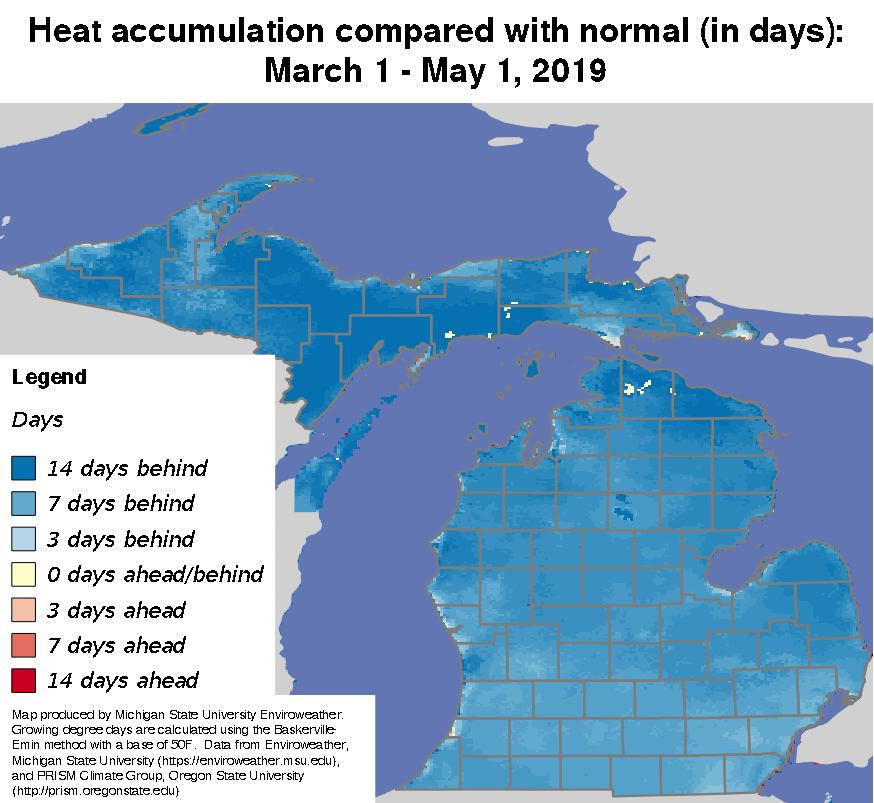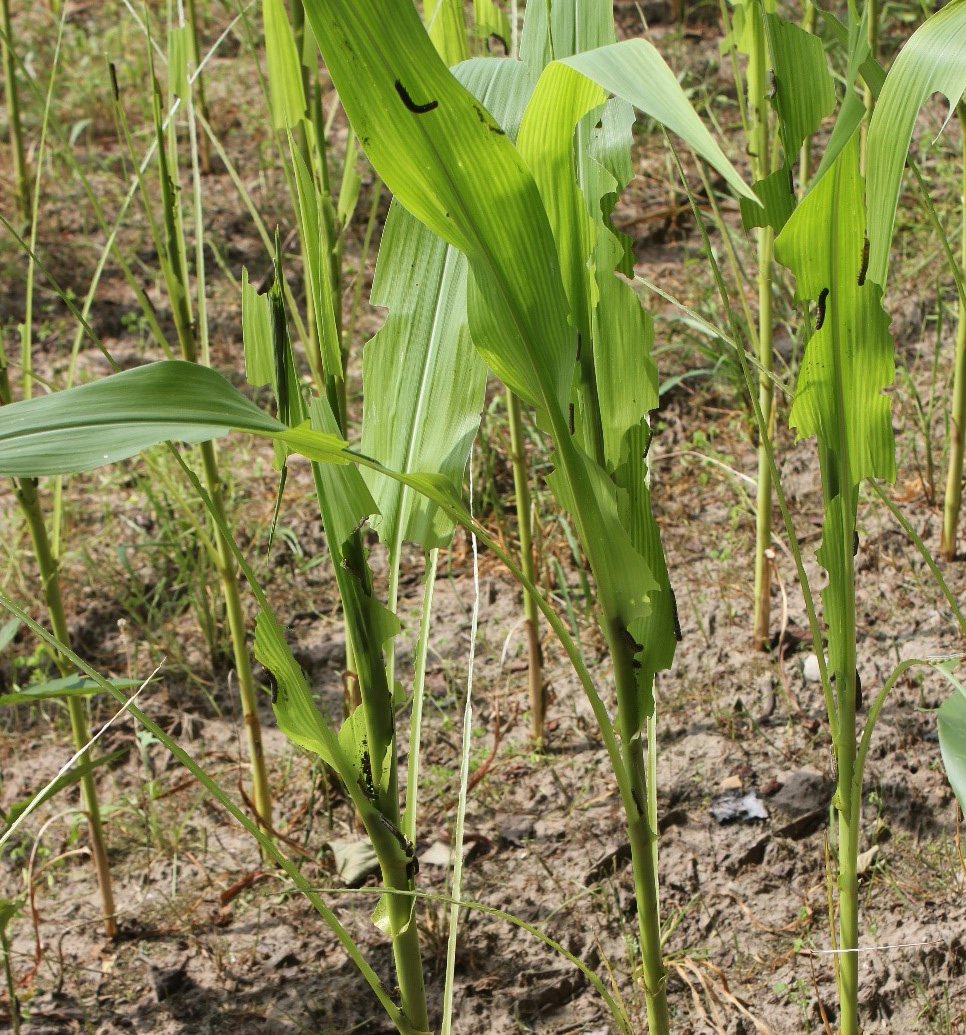Southwest Michigan field crop update – May 2, 2019
Ready, set…wet! The 2019 field season was just about to get rolling when wet snow and heavy rains brought agricultural operations to a quick standstill.

Planters were just getting rolling on southwest Michigan’s lightest soils when Mother Nature returned the region to winter on Saturday afternoon, April 27. Falling temperatures and raindrops gave way to huge snowflakes across a pretty good swath of lower southwest Michigan on April 28. Parts of Van Buren County received as much as 4 inches of snow. After a brief respite from precipitation on Sunday, heavy rainfall and thunderstorms returned to the area on Monday and Tuesday. Drier conditions the previous week allowed for tillage work and a little bit of planting.
We will be monitoring soybean fields for signs of chilling injury from the near freezing water from snow melt on Sunday. Mark Licht, Iowa State University cropping systems specialist, wrote in a recent article, “Imbibitional chilling or cold injury,” water imbibed by the seed during the first 24 hours is the most critical to seedling injury. Licht reports that severe imbibitional chilling can result in seed death, “corkscrewing” of the mesocotyl and leafing out underground as well as surviving seedlings having reduced seedling vigor. Given the level of soil moisture that was present during the last week of April, most fields planted by the middle of last week hopefully should have imbibed soil moisture enough to avoid significant injury. Temperatures recovered nicely into the 50s quickly on Sunday afternoon, which may have helped minimize further effect of chilling injury.

We are still about one week behind in heat units across much of the state compared to normal, but we are not as far behind as we were in 2018. Soil temperatures were progressing nicely in April before moving backwards this past week. Temperatures at the 4-inch depth at the Mendon Enviroweather station in St. Joseph County had fallen into the upper 40s before rebounding slightly, and they continue to hover around the 50-degree Fahrenheit mark.






The annual alfalfa weevil field watching begins

Alfalfa weevil tip feeding is just getting underway in southwest Michigan hay fields. This is a pest we regularly expect in fields and can be quite destructive if high populations develop early before we plan to harvest first cutting. Michigan State University Enviroweather provides modeling for this pest under the Field Crops then Alfalfa Management tabs for each weather station. The model anticipated first feeding around May 9 in the Paw Paw area (Tea Pot Dome Enviroweather station), but we did find some in the area about seven days early.
Treatment thresholds are reached when 40% of the plants are showing tip feeding, live larvae are present and you will not be able to harvest within six to seven days. Harvesting earlier is the preferred way of dealing with the pest, if possible, because it saves the cost of the insecticide application and can help preserve biological control organisms. It also helps to protect honey bees, particularly during bloom. Obviously, we are a long way from harvest as well as the treatment threshold, but it is time to put scouting for the pest on your calendar.
Black cutworm and true armyworm

Pheromone trap catches for black cutworm and true armyworm remain high in many locations across Indiana. In addition, the prolonged wet conditions across large swaths of southern Michigan have allowed cover crops/winter annuals to grow rapidly. This sets the stage for potential challenges from these pests. The nature of outbreaks for these pests is highly sporadic, partially because the moths are deposited by thunderstorm downdrafts. We will be monitoring several traps in the region and reporting on trap counts and peak flight times as the season progresses.
The key to understanding your risk for either species is to evaluate the amount of green material and type of field cover that is present in your fields at the time moths arrive and lay eggs. Presumably, this has started now, at least in small numbers. Chris DiFonzo, MSU Extension field crops entomologist, wrote an excellent article on what conditions can lead to black cutworm outbreaks. Grassy weeds, cereal cover crops and wheat are very attractive to armyworm moths. Winter annual and emerged annual broadleaf weeds are more attractive to black cutworms.

Remember, cutworm larvae clip the plants off at the soil surface while armyworm tend to feed on the leaves from the edges. Black cutworms often hide under the soil surface during bright sunshine and can be hard to spot. The number of fields that are treated for these pests each year is limited. However, high populations can be very destructive.
In addition, Bt corns have some activity on cutworm and armyworms. However, it is important to note that the number of caterpillars in the field can have a lot to do with how effective the Bt corns are at controlling outbreaks. Be prepared to scout fields that have suitable egg laying habitat for these species over the next couple of weeks. Also, be aware that fields that are beginning to die back from burndown herbicides at the time the eggs are laid may still have infestation problems.




 Print
Print Email
Email